

The Making of the Fittest: Natural Selection and Adaptation. Misconceptions about natural selection and adaptation. Are we ready for neo-evolution? - Harvey Fineberg. Theodosius Grygorovych Dobzhansky was a prominent geneticist and evolutionary biologist, and a central figure in the field of evolutionary biology for his work in shaping the unifying modern evolutionary synthesis.

Antonio Damasio's research in neuroscience has shown that emotions play a central role in social cognition and decision-making. His work has had a major influence on current understanding of the neural systems, which underlie memory, language, consciousness. Listen to his TED talk about the quest to understand consciousness. The Big Bang theory is an effort to explain what happened at the very beginning of our universe.
Adaptations of Animals. Camouflage. Ccl.northwestern.edu/simevolution/obonu/cladograms/Open-This-File.swf. How did feathers evolve? - Carl Zimmer. Curiosity, discovery and gecko feet - Robert Full. UC Berkeley biologist Robert Full is fascinated with cockroach legs that allow them to scuttle at full speed across loose mesh and gecko feet that have billions of nano-bristles to run straight up walls.
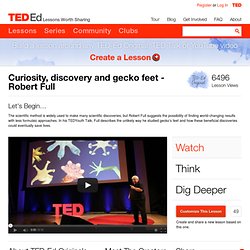
He's using his research to design the perfect robotic "distributed foot," adding spines, hairs and other parts to metal legs and creating versatile scampering machines. He's helped create robots, such as Spinybot, which can walk up sheer glass like a gecko -- and he even helped Pixar create more realistic insect animations in the film A Bug's Life.
Robert Full on animal movement Robert Full: Engineering and evolution Robert Full: Learning from the gecko's tail Geckos are lizards belonging to the infraorder Gekkota, found in warm climates throughout the world. Geckos are lizards that can run rapidly up walls and even upside down on polished glass. Gecko Time: Information for Gecko Enthusiasts. Billions of cicadas to emerge after 17-year absence. How life came to land - Tierney Thys. The Shape of Life series educator resources www.Shapeoflife.org Additional Shape of Life series resources (In particular, check out Bill Shear’s work TEDxSMU talk by Tierney Thys highlighting the 8 major body plans of animal evolution Beautiful imagery and rich information featuring planktonic animal life www.PlanktonChronicles.org The Tree of Life web project explores the connections and evolution of life.
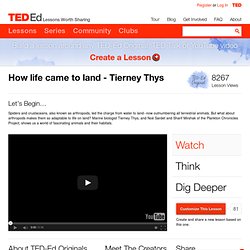
The World Register of Marine Species keeps a tally of all species described in the ocean. How many species inhabit Earth and how might we answer that question? Where did squid, jellyfish, and other sea creatures begin life? New videography techniques have opened up the oceans' microscopic ecosystem, revealing it to be both mesmerizingly beautiful and astoundingly complex. Five fingers of evolution - Paul Andersen. In his talk, Paul Andersen explains the five causes of microevolution.
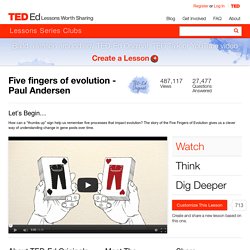
Research one example for each cause in the human population. Use the following population simulator to simulate microevolution: Run the simulation using the default settings. Note the change in gene frequencies due to chance. Earth's mass extinction - Peter Ward. This Island Earth is a 1955 American science fiction film directed by Joseph M.
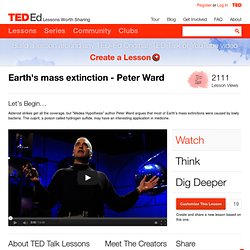
Newman. It is based on the novel of the same name byRaymond F. Jones. The Rare Earth hypothesis argues that complex extraterrestrial life requires an Earth-like planet with similar circumstance and that few if any such planets exist. 9. Hare and Lynx Populations. Once students understand the concept of populations, it is important to introduce the idea of population change.
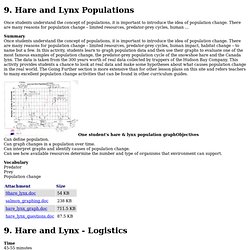
There are many reasons for population change – limited resources, predator-prey cycles, human ... Summary Once students understand the concept of populations, it is important to introduce the idea of population change. There are many reasons for population change – limited resources, predator-prey cycles, human impact, habitat change – to name but a few.
In this activity, students learn to graph population data and then use their graphs to evaluate one of the most famous examples of population change, the predator-prey population cycle of the snowshoe hare and the Canada lynx. The data is taken from the 300 years worth of real data collected by trappers of the Hudson Bay Company. Teacher Background After learning about habitats, food webs and food chains, students can begin to discover the relationships between organisms and between organisms and their environment. Gould League - Foodwebs. Evolution.